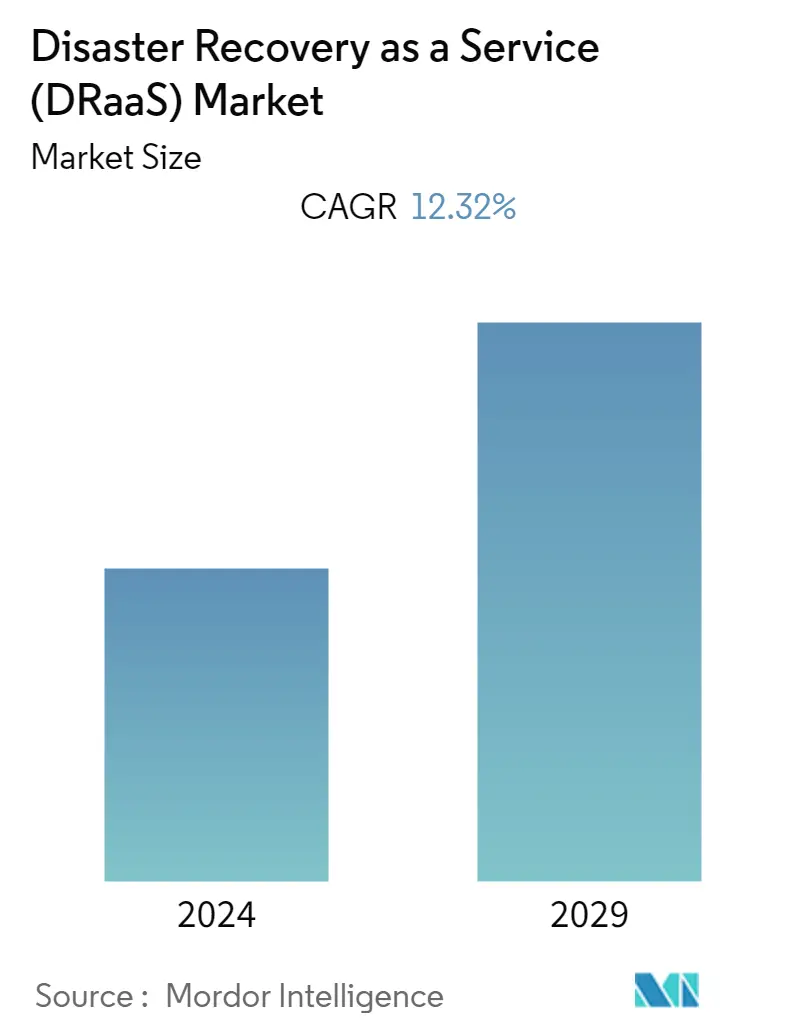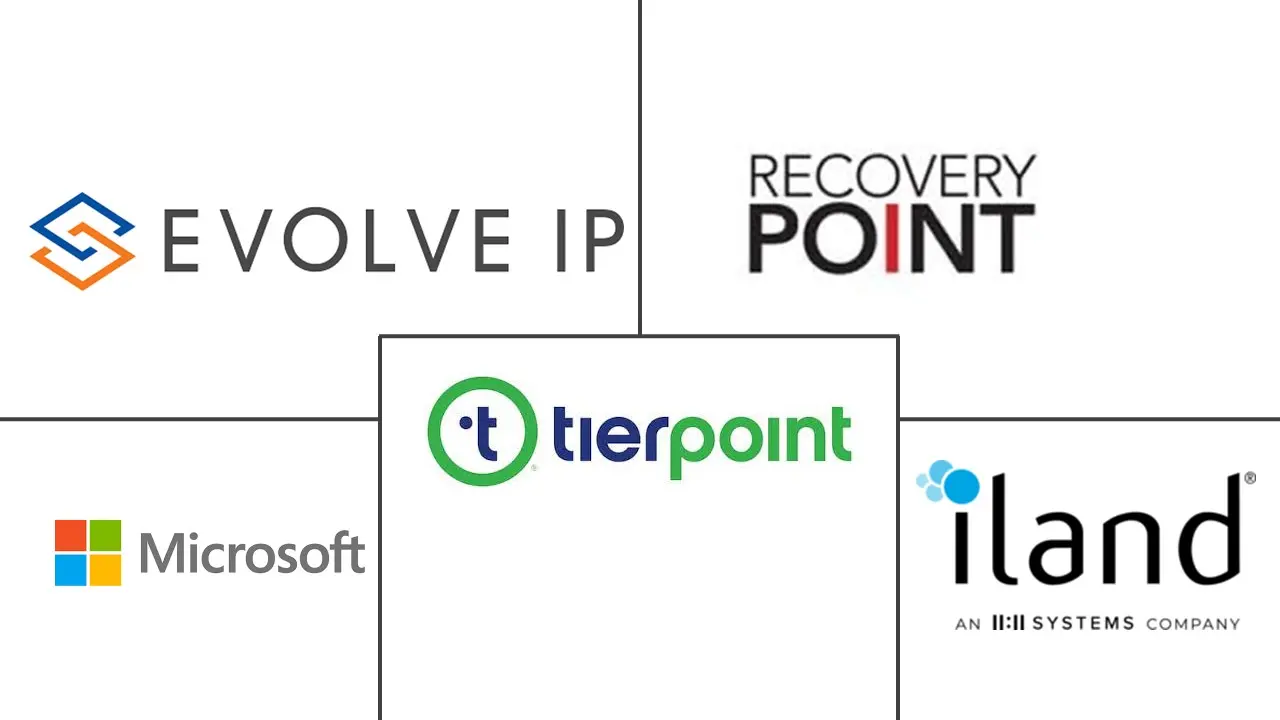Market Size of Disaster Recovery as a Service (DRaaS) Industry

| Study Period | 2019 - 2029 |
| Base Year For Estimation | 2023 |
| CAGR | 12.32 % |
| Fastest Growing Market | North America |
| Largest Market | Asia-Pacific |
| Market Concentration | Low |
Major Players
*Disclaimer: Major Players sorted in no particular order |
Need a report that reflects how COVID-19 has impacted this market and its growth?
Disaster Recovery as a Service Market Analysis
The Disaster Recovery as a Service (DRaaS) Market is expected to register a CAGR of 12.32% over the forecast period. Disaster Recovery as a Service (DRaaS) is generally utilized by organizations facing an event where recovery capabilities are quickly needed. Time-to-value concerns and ongoing care and feeding are essential considerations. The services typically include:
- An on-demand recovery cloud for planned tests, exercises, and declarations. Server image and production data replication to the cloud, automated failover and failback between production and the target cloud environment, and recovery time service-level agreements (SLAs).
- Initially, DRaaS solutions were considerably implemented by small businesses that didn't have secondary sites or were eliminating data centers to reduce costs. However, DRaaS is also preferred by larger organizations in the modern landscape, as providers have reported an increase in large and complex environments and the volume of servers per client. The drivers in the studied market include increasing data breaches and ransomware attacks, creating a need for robust data protection solutions, and reducing the operational cost of DRaaS solutions compared to traditional solutions.
- The players in the market are expected to increase market capture and reduce customer friction by offering enhanced onboarding options and additional capabilities in support of various recovery targets, platforms supported (i.e., beyond VMware and physical x86), and international aid and bolster DRaaS solutions with built-in add-ons like automated recovery testing and change management assurance.
- The DRaaS market consists of multiple players with varying abilities to support requirements. These can relate to workload types, geographies, scale, onboarding, ongoing support levels, the number of recovery point objective (RPO) and recovery time objective (RTO) options, and target recovery locations. The provider may deliver fully managed, assisted recovery or self-service services.
- On the other hand, customers may need to be made aware of what they have in their data centers. They must be aware of their various IT assets and how their criticality translates into the service tiers of a DRaaS provider. The service provider's replication method generally gives different recovery periods at other price points. The most costly tier may offer workload recovery in seconds or minutes. In contrast, the mid-tier may offer a 4-to-8-hour enterprise workload recovery time, and the least expensive tier may offer a 24-to-48-hour recovery.
- A nationwide lockdown across the globe marked the pandemic, and company employees have begun to work remotely. The increased dependency on the security of data measures was brought to light by several data breaches and an increase in cyberattacks. Furthermore, ransomware attacks have increased significantly during the pandemic, which has underlined the need for disaster recovery solutions to prevent the downtime of systems that could result in severe losses for organizations.
